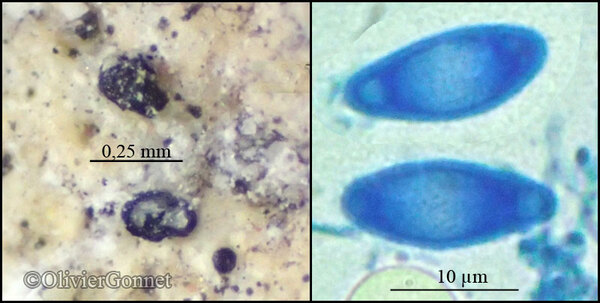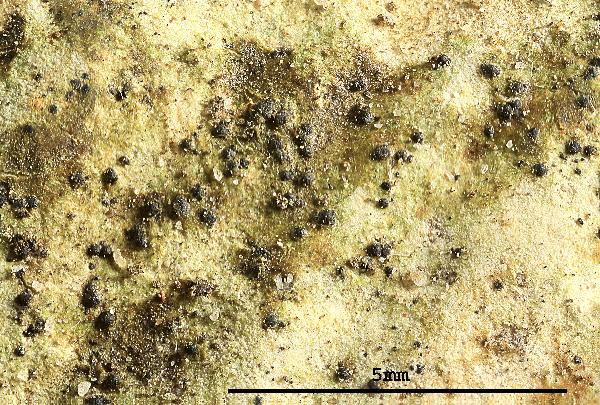Verrucaria murina Leight.
Angioc. Lich.: 59, 1851.
Synonyms: Amphoridium myriocarpum (Hepp ex Lönnr.) Servít; Verrucaria brachyspora Arnold?; Verrucaria pazientii A. Massal.?
Distribution: N - Ven (Caniglia & al. 1999, Lazzarin 2000b), TAA, Lomb, Emil (Fariselli & al. 2020), Lig (Giordani & al. 2016). C - Tosc, Umb (Genovesi & Ravera 2001, Ravera & al. 2006), Sar (Rizzi & al. 2011).
Description: Thallus crustose, endosubstratic or hemiendosubstratic, grey, grey-brown or pale olive-brown, rarely dark brown, forming small flecks and patches, often with a thin dark prothallus but not forming mosaics, sometimes with distinct goniocysts. Perithecia numerous, black, very small, 0.12-0.28 mm across, forming moderate to prominent projections, the apex often flattened or slightly concave, the base not immersed in the rock and not covered by thallus. Involucrellum adpressed to exciple and scarcely distinguishable from it, or adpressed in upper part and slightly spreading in lower part, reaching to base-level; exciple up to 0.2 mm across, black throughout; hamathecium of periphyses and periphysoids, interascal filaments absent; hymenial gel hemiamyloid, I+ red (I+ blue at very low concentrations of I), K/I+ blue. Asci 8-spored, clavate, I-, fissitunicate, the wall thickened above, with an ocular chamber, dehiscent by extrusion of an endotunica to form a delicate rostrum, Verrucaria-type. Ascospores 1-celled, hyaline, ellipsoid, (13.5-)18-24(-28.5) x (6-)8-12(-14.5) μm. Photobiont chlorococcoid. Spot tests: K-, C-, KC-, P-, UV-. Chemistry: without lichen substances.Note: on limestone and dolomite in upland areas. According to Orange (2013) the epithet murina has been used for widely different species, and the entire complex is presently under revision. Earlier records from Southern Italy (see Nimis 1993: 745), being dubious, are not accepted here.
Growth form: Crustose endolithic
Substrata: rocks
Photobiont: green algae other than Trentepohlia
Reproductive strategy: mainly sexual
Poorly known taxon in need of further study
Commonnes-rarity: (info)
Alpine belt: very rare
Subalpine belt: very rare
Oromediterranean belt: extremely rare
Montane belt: very rare
Submediterranean belt: extremely rare
Padanian area: absent
Humid submediterranean belt: extremely rare
Humid mediterranean belt: absent
Dry mediterranean belt: absent
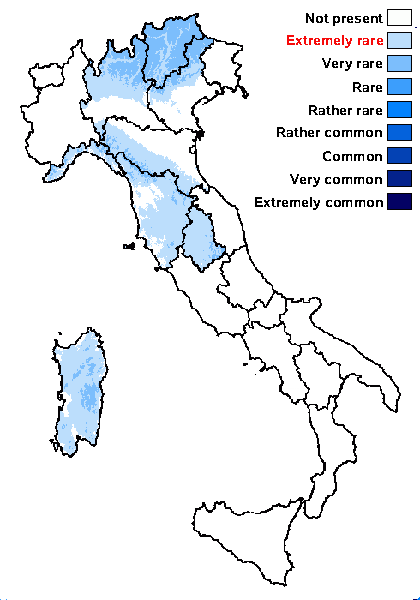
Predictive model
Herbarium samples
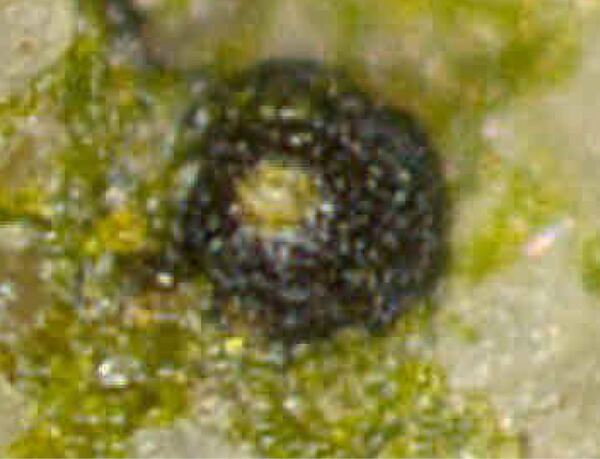

Felix Schumm – CC BY-SA 4.0
[19317], Germany, Baden-Württemberg, Kreis Göppingen, Waldgebiet 2.3 km nordwestlich von Wangen, 48.74312° N, 9.58412 ° E, 455 m, auf feuchten, am Boden liegenden Sandsteinchen auf dem Brosenholzweg. Leg. F. Schumm 09.04.2015, det F. Schumm 2015
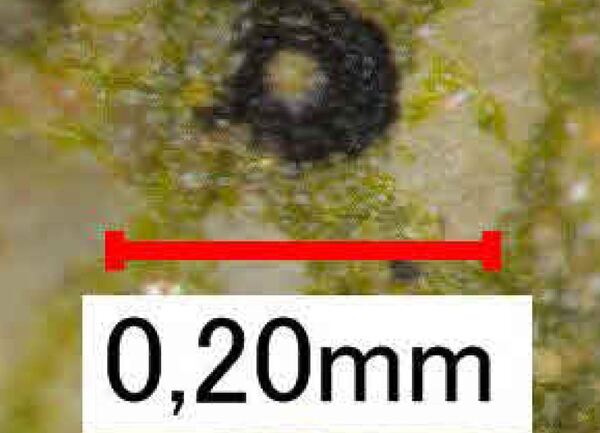

Felix Schumm – CC BY-SA 4.0
[19317], Germany, Baden-Württemberg, Kreis Göppingen, Waldgebiet 2.3 km nordwestlich von Wangen, 48.74312° N, 9.58412 ° E, 455 m, auf feuchten, am Boden liegenden Sandsteinchen auf dem Brosenholzweg. Leg. F. Schumm 09.04.2015, det F. Schumm 2015
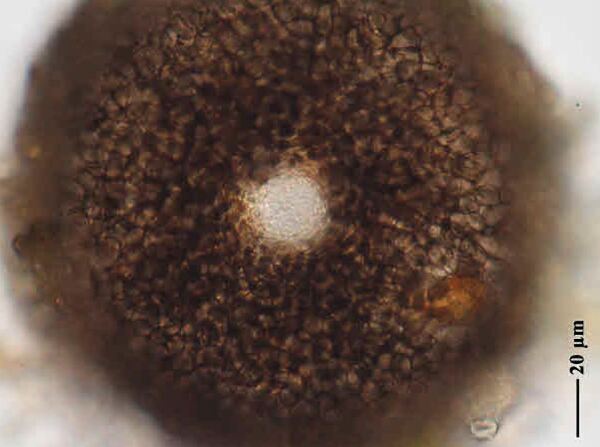

Felix Schumm – CC BY-SA 4.0
[19317], Germany, Baden-Württemberg, Kreis Göppingen, Waldgebiet 2.3 km nordwestlich von Wangen, 48.74312° N, 9.58412 ° E, 455 m, auf feuchten, am Boden liegenden Sandsteinchen auf dem Brosenholzweg. Leg. F. Schumm 09.04.2015, det F. Schumm 2015
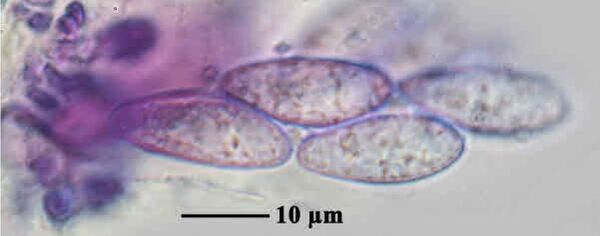

Felix Schumm – CC BY-SA 4.0
[19317], Germany, Baden-Württemberg, Kreis Göppingen, Waldgebiet 2.3 km nordwestlich von Wangen, 48.74312° N, 9.58412 ° E, 455 m, auf feuchten, am Boden liegenden Sandsteinchen auf dem Brosenholzweg. Leg. F. Schumm 09.04.2015, det F. Schumm 2015
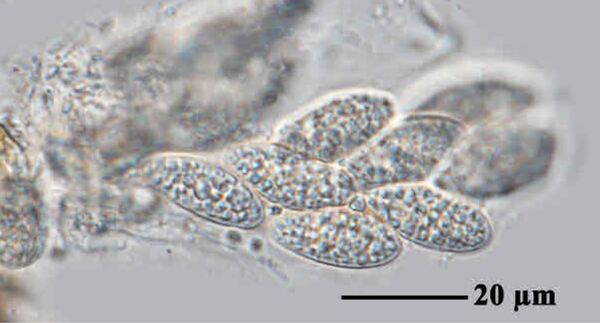

Felix Schumm – CC BY-SA 4.0
[19317], Germany, Baden-Württemberg, Kreis Göppingen, Waldgebiet 2.3 km nordwestlich von Wangen, 48.74312° N, 9.58412 ° E, 455 m, auf feuchten, am Boden liegenden Sandsteinchen auf dem Brosenholzweg. Leg. F. Schumm 09.04.2015, det F. Schumm 2015
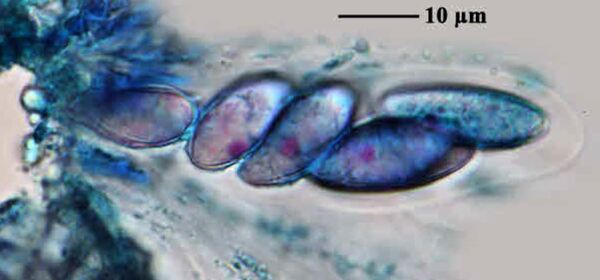

Felix Schumm – CC BY-SA 4.0
[19317], Germany, Baden-Württemberg, Kreis Göppingen, Waldgebiet 2.3 km nordwestlich von Wangen, 48.74312° N, 9.58412 ° E, 455 m, auf feuchten, am Boden liegenden Sandsteinchen auf dem Brosenholzweg. Leg. F. Schumm 09.04.2015, det F. Schumm 2015
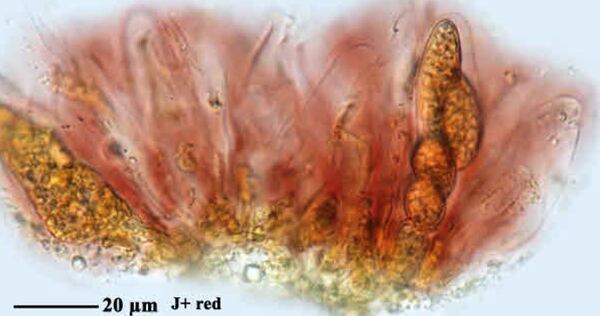

Felix Schumm – CC BY-SA 4.0
[19317], Germany, Baden-Württemberg, Kreis Göppingen, Waldgebiet 2.3 km nordwestlich von Wangen, 48.74312° N, 9.58412 ° E, 455 m, auf feuchten, am Boden liegenden Sandsteinchen auf dem Brosenholzweg. Leg. F. Schumm 09.04.2015, det F. Schumm 2015
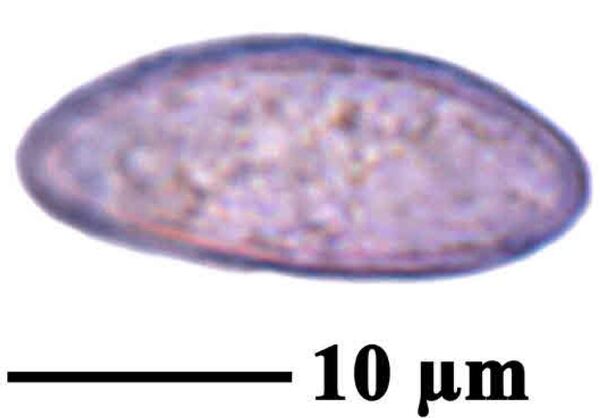

Felix Schumm – CC BY-SA 4.0
[19317], Germany, Baden-Württemberg, Kreis Göppingen, Waldgebiet 2.3 km nordwestlich von Wangen, 48.74312° N, 9.58412 ° E, 455 m, auf feuchten, am Boden liegenden Sandsteinchen auf dem Brosenholzweg. Leg. F. Schumm 09.04.2015, det F. Schumm 2015
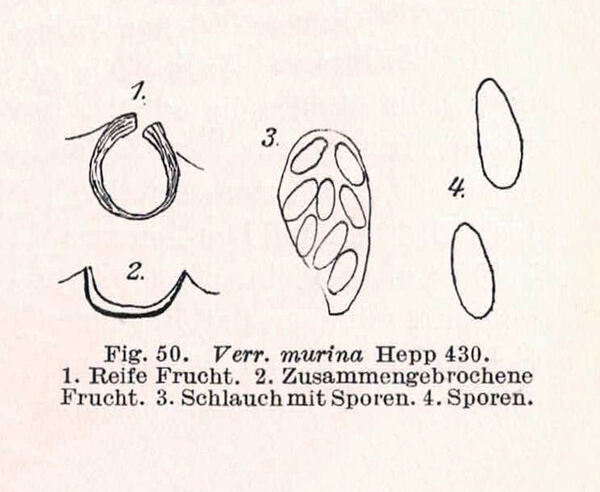
Zschacke, H. (1934) Epigloeaceae, Verrucariaceae und Dermatocarpaceae. In: Dr. L. Rabenhorst‘s Kryptogamen-Flora, Band 9, Abt. 1, Teil 1. Akademische Verlagsgesellschaft, Leipzig, 695 pp. - Public Domain
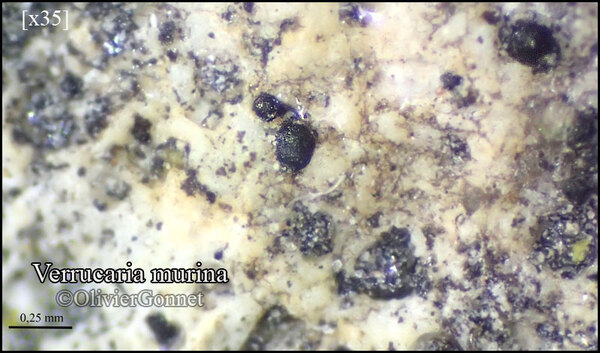
Courtesy Danièle et Olivier Gonnet - Source: https://www.afl-lichenologie.fr/Photos_AFL/Photos_AFL_V/Texte_V/Verrucaria_murina.htm
France, session AFL 2015 - Saint-Sozy - Lot
Growth form: Crustose endolithic
Substrata: rocks
Photobiont: green algae other than Trentepohlia
Reproductive strategy: mainly sexual
Poorly known taxon in need of further study
Commonnes-rarity: (info)
Alpine belt: very rare
Subalpine belt: very rare
Oromediterranean belt: extremely rare
Montane belt: very rare
Submediterranean belt: extremely rare
Padanian area: absent
Humid submediterranean belt: extremely rare
Humid mediterranean belt: absent
Dry mediterranean belt: absent

Predictive model
| Herbarium samples |


Felix Schumm – CC BY-SA 4.0
[19317], Germany, Baden-Württemberg, Kreis Göppingen, Waldgebiet 2.3 km nordwestlich von Wangen, 48.74312° N, 9.58412 ° E, 455 m, auf feuchten, am Boden liegenden Sandsteinchen auf dem Brosenholzweg. Leg. F. Schumm 09.04.2015, det F. Schumm 2015


Felix Schumm – CC BY-SA 4.0
[19317], Germany, Baden-Württemberg, Kreis Göppingen, Waldgebiet 2.3 km nordwestlich von Wangen, 48.74312° N, 9.58412 ° E, 455 m, auf feuchten, am Boden liegenden Sandsteinchen auf dem Brosenholzweg. Leg. F. Schumm 09.04.2015, det F. Schumm 2015


Felix Schumm – CC BY-SA 4.0
[19317], Germany, Baden-Württemberg, Kreis Göppingen, Waldgebiet 2.3 km nordwestlich von Wangen, 48.74312° N, 9.58412 ° E, 455 m, auf feuchten, am Boden liegenden Sandsteinchen auf dem Brosenholzweg. Leg. F. Schumm 09.04.2015, det F. Schumm 2015


Felix Schumm – CC BY-SA 4.0
[19317], Germany, Baden-Württemberg, Kreis Göppingen, Waldgebiet 2.3 km nordwestlich von Wangen, 48.74312° N, 9.58412 ° E, 455 m, auf feuchten, am Boden liegenden Sandsteinchen auf dem Brosenholzweg. Leg. F. Schumm 09.04.2015, det F. Schumm 2015


Felix Schumm – CC BY-SA 4.0
[19317], Germany, Baden-Württemberg, Kreis Göppingen, Waldgebiet 2.3 km nordwestlich von Wangen, 48.74312° N, 9.58412 ° E, 455 m, auf feuchten, am Boden liegenden Sandsteinchen auf dem Brosenholzweg. Leg. F. Schumm 09.04.2015, det F. Schumm 2015


Felix Schumm – CC BY-SA 4.0
[19317], Germany, Baden-Württemberg, Kreis Göppingen, Waldgebiet 2.3 km nordwestlich von Wangen, 48.74312° N, 9.58412 ° E, 455 m, auf feuchten, am Boden liegenden Sandsteinchen auf dem Brosenholzweg. Leg. F. Schumm 09.04.2015, det F. Schumm 2015


Felix Schumm – CC BY-SA 4.0
[19317], Germany, Baden-Württemberg, Kreis Göppingen, Waldgebiet 2.3 km nordwestlich von Wangen, 48.74312° N, 9.58412 ° E, 455 m, auf feuchten, am Boden liegenden Sandsteinchen auf dem Brosenholzweg. Leg. F. Schumm 09.04.2015, det F. Schumm 2015


Felix Schumm – CC BY-SA 4.0
[19317], Germany, Baden-Württemberg, Kreis Göppingen, Waldgebiet 2.3 km nordwestlich von Wangen, 48.74312° N, 9.58412 ° E, 455 m, auf feuchten, am Boden liegenden Sandsteinchen auf dem Brosenholzweg. Leg. F. Schumm 09.04.2015, det F. Schumm 2015

Zschacke, H. (1934) Epigloeaceae, Verrucariaceae und Dermatocarpaceae. In: Dr. L. Rabenhorst‘s Kryptogamen-Flora, Band 9, Abt. 1, Teil 1. Akademische Verlagsgesellschaft, Leipzig, 695 pp. - Public Domain

 INDEX FUNGORUM
INDEX FUNGORUM
 GBIF
GBIF
 DOLICHENS
DOLICHENS
